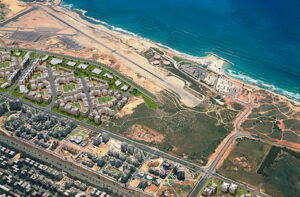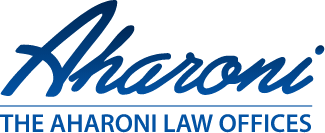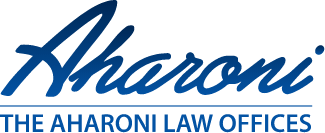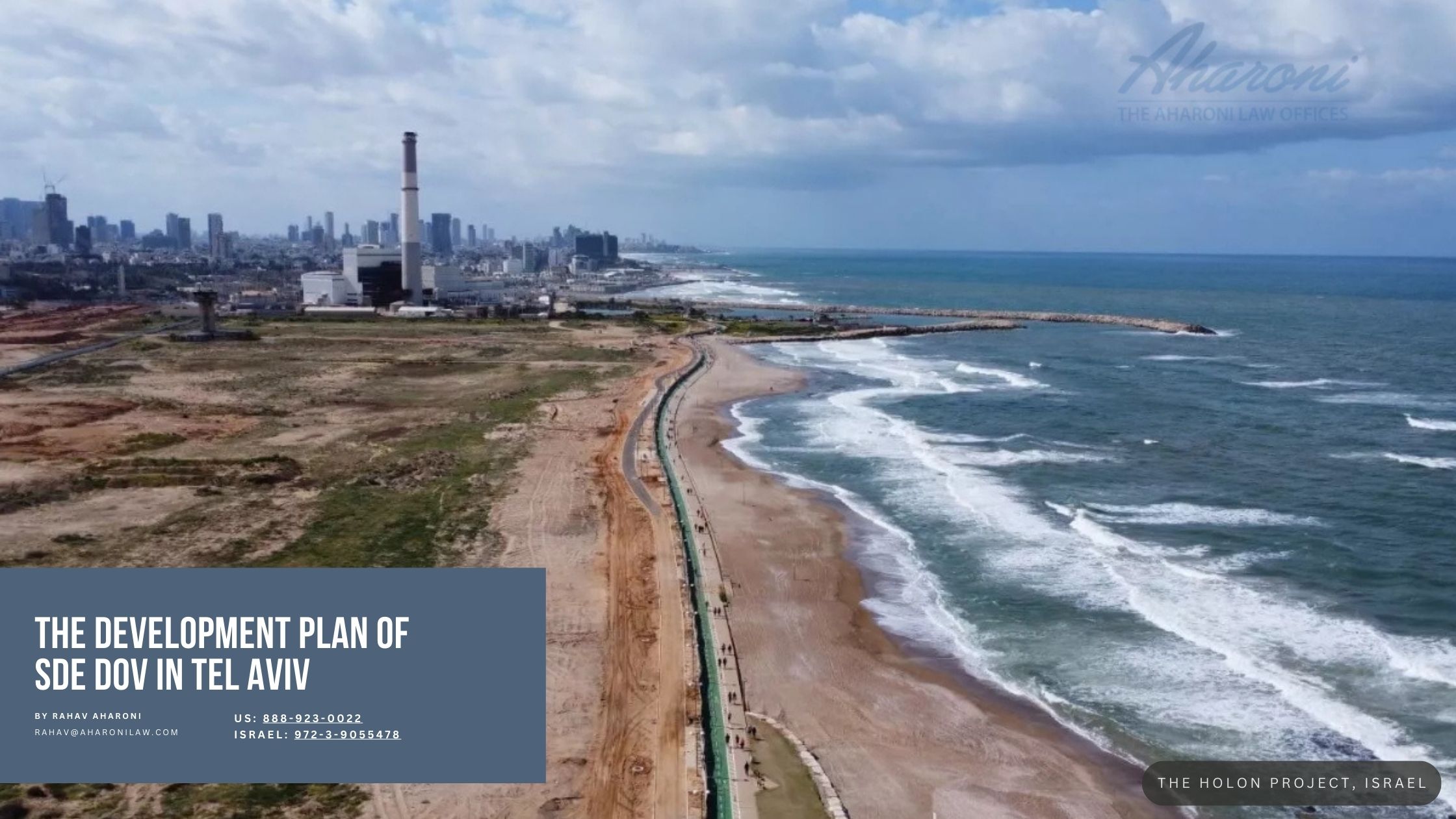Preparing for construction on the grounds of the former Sde Dov Airport in Tel Aviv, Israel, now slated to become a new residential district.
In North Tel Aviv, one of Israel’s most ambitious development projects is underway at Sde Dov – the former municipal airport of Tel Aviv (also known as Dov Hoz Airport). The Sde Dov redevelopment plan (officially Tel Aviv plan TA/4444) is a monumental undertaking that aims to convert this prime coastal site into a thriving urban residential and commercial district.
The project covers approximately 1,300 dunams (1.3 km²) of land along the Mediterranean, stretching from the Tel Aviv Port/Reading Power Station area in the south up to the city’s border in the north (near Ramat Aviv), and from the coastline in the west to the extension of Ibn Gabirol Street in the east. In urban terms, this is essentially creating an entire new neighborhood in northwestern Tel Aviv, adjacent to existing upscale areas (like the Kochav HaTzafon and Nofei Yam neighborhoods).
The Sde Dov Project’s Development in Tel Aviv, Israel
According to the master plan blueprint, the Sde Dov project will include around 16,000 new housing units in total. There will be a mix of apartment buildings, ranging from mid-rise structures to clusters of taller towers (some up to 40 stories) along major boulevards.
 In addition to housing, the plan provides for extensive commercial and employment space (roughly half a million square meters of offices and retail), several hotels (with about 1,150 hotel rooms planned in the northern and central parcels), and large public parks and facilities. In fact, a seaside park and promenade will be created where the airport’s runway once lay, ensuring public access to the beach. The new district will also feature modern infrastructure and transit, including new roads and connections to Tel Aviv’s planned light rail and metro lines.
In addition to housing, the plan provides for extensive commercial and employment space (roughly half a million square meters of offices and retail), several hotels (with about 1,150 hotel rooms planned in the northern and central parcels), and large public parks and facilities. In fact, a seaside park and promenade will be created where the airport’s runway once lay, ensuring public access to the beach. The new district will also feature modern infrastructure and transit, including new roads and connections to Tel Aviv’s planned light rail and metro lines.
Crucially, the Sde Dov plan incorporates affordable and inclusive housing components as a matter of policy. Out of the 16,000 apartments, 2,400 units are designated as affordable rental housing owned by the Tel Aviv Municipality – these are long-term rental apartments that will remain under public ownership to provide below-market housing for eligible residents.
An additional 4,500 units are earmarked as “special” small units or assisted living/student housing to encourage a diverse mix of residents. (We will discuss the implications of this for private landowners shortly.)
The timeline of Sde Dov’s redevelopment has been dramatic. For decades, the airport’s continued operation blocked any redevelopment. Private landowners who held title to the land (even since before the state of Israel) fought legal battles for the right to build or for compensation.
This culminated in a 2019 Israeli Supreme Court decision that essentially forced the government’s hand: either close the airport and redevelop the land or pay prohibitively high compensation to the landowners. The government chose to shut down Sde Dov. In July 2019, the airport ceased operations and was vacated, ending its 82-year history and freeing the land for civilian use. This decision, with its historical implications, marks a significant turning point in the development of the Tel Aviv area.
Following the closure, Plan TA/4444 (the outline plan for Sde Dov) was approved and took effect in August 2020. This outline plan divides the area into three main sub-districts (often called Compounds 1, 2, and 3 – roughly north, central, and south/Eshkol). Each sub-district requires approval of a detailed plan to specify exact building rights and parcel allocations. Progress has been steady: a detailed plan for the “Eshkol” compound (south-east Sde Dov) was approved by May 2021, and detailed plans for the central and northern compounds are in advanced stages of preparation.
This means the first construction permits can be issued in the Eshkol section, while planning finalization continues for the rest. Indeed, the Israel Land Authority (ILA) did not wait long – it began public tenders for Sde Dov building plots in 2021, even with only part of the area fully approved.
The initial tenders saw feverish demand and record-breaking land prices. In the first auction for Sde Dov plots (September 2021), developers bid a total of ₪4.4 billion for rights to build the first ~1,500 apartments – an average land cost of ₪2.8 million per housing unit. This translates to a standard flat’s expected luxury apartment prices of ₪4.5–5 million (USD ~$1.3–1.5 million).
The market views Sde Dov as highly desirable – its location by the sea in Tel Aviv commands a premium. Construction on some of these plots is now underway, and as of 2025, further tenders are continuing (including hundreds of affordable housing units). Over the next 5-10 years, the empty former airfield will gradually rise as a new upscale neighborhood of Tel Aviv, offering a promising investment opportunity.
Legal and Investment Implications of Sde Dov for Foreign Owners
The Sde Dov project carries complex legal implications like H-500 in Holon, but with its own twists. Notably, a large portion of this land has been privately owned on paper since the British Mandate period – yet those owners have only now gained the ability to use or sell their land after the airport closure. Many of these owners (or their heirs) live outside Israel. If you are a foreign citizen with ancestral land rights in Tel Aviv’s “Gush Hagadol” area (the large block that includes Sde Dov), the redevelopment is a good opportunity to realize that asset’s value. At the same time, navigating the process requires understanding Israel’s planning law and engaging with public authorities.
Historic Private Landowners Finally Recognized
It surprises many to learn that over a thousand private individuals bought land in and around Sde Dov between the 1930s and 1970s (Farewell to Sde Dov Airport in Tel Aviv). These were often Jewish families investing in the future of Tel Aviv and Eretz Israel. When the state needed the land for an airport and military base, the land was effectively sequestered for public use, but ownership wasn’t forgotten. For 50 years, the descendants of those original owners pressed the government for their property rights or compensation.
Now, with the airport’s closure, those private ownership rights are being honored within the new plan. In practice, this means if your family has a title in the Sde Dov area, you are entitled to a share of the newly zoned building rights. Indeed, there were around 1,700 private landowners identified in the Sde Dov plan (many being heirs of the 1930s owners), according to news reports. Some of these heirs include prominent figures, illustrating how widely dispersed the ownership is.
The first step for any such landowner is to ensure your ownership is registered and up to date (similar to H-500, a succession order may be needed if the original owner is deceased). The next step is to engage with the planning process to claim your development rights.
Unification and “Castling” of Rights
The Sde Dov outline plan initially split each private owner’s rights across all three sub-districts – essentially giving everyone a little slice of each zone. However, this default allocation is impractical for development (no single owner would have enough in one place to build).
Therefore, a procedure was established (in coordination with the ILA and Tel Aviv Municipality) to consolidate rights for those owners who band together. In what is nicknamed a “castling” move, the private landowners’ rights are being swapped and concentrated into one compound. Specifically, private owners (represented collectively by counsel) agreed to relinquish their fractional rights in the northern and central areas back to the state, in exchange for the state relinquishing its rights in the southern residential area to the private owners.
The result is that all participating landowners get full rights concentrated in Compound 3 (a residential zone), which is far more workable – they effectively co-own larger plots there, rather than tiny bits of everything. This reallocation was requested in July 2020 and was done according to a published ILA procedure.
For a foreign owner, the takeaway is that cooperation with other owners is essential. By acting collectively (often through an Israeli law firm representing a group of owners), you can maximize your share and simplify the path to ultimately receiving apartments or saleable assets. If you choose not to cooperate, you could be left with a diluted interest that is hard to capitalize on. Experienced Israeli real estate attorneys at our firm can help assemble owner groups, draft partnership agreements among heirs or co-owners, and interface with the Israeli authorities to execute these consolidations.
Affordable Housing Requirement – Reduced Share for Owners
As mentioned, the Tel Aviv Municipality imposed a significant affordable housing component in Sde Dov. From a legal standpoint, this was effectively a planned expropriation of a portion of the private land value for public benefit. 2,400 of the 16,000 units (15% of the residences) will be built on private land but then transferred to the Municipality to operate as affordable housing, with no compensation to the original landowners.
This condition – understandably controversial among owners – was challenged in court. In 2021, a group of Sde Dov landowners petitioned to remove these 2,400 affordable rental units from the calculation that divides the land (arguing it unfairly diluted their development rights). However, the Tel Aviv Administrative Court dismissed the petition and upheld the requirement, meaning those units remain in the plan as a public obligation.
In practical terms, private owners have to “contribute” part of their land toward the affordable housing initiative. For example, if you owned enough land for 10 apartments under the plan, a certain fraction of that (perhaps 1–2 apartments’ worth) might be siphoned off as part of the city’s allotment. This legal outcome underscores two points:
- Urban policy goals (like creating some affordable housing in a luxury project) can directly impact property rights.
- Having legal counsel to advocate for owners is vital, even if not every battle succeeds. Moving forward, owners should be aware that their final share of market-rate units will exclude those municipal apartments.
The upside is that aside from this carve-out, the remaining rights can be quite valuable, as the high land prices indicate. It becomes even more crucial to accurately quantify your share after such deductions and to ensure the distribution tables used in the plan are correct. Each owner’s percentage in the final project must reflect these public dedications appropriately.
High Property Values and Investment Potential
The Sde Dov district is poised to be one of Tel Aviv’s most desirable neighborhoods, which presents a potentially lucrative situation for landowners and investors. As noted, the market price for land in Sde Dov has skyrocketed, with developers willingly paying on the order of ₪2.8 million (nearly $800,000) just for the land per apartment. For a foreign investor who holds a chunk of land rights, this could translate into substantial financial gain if handled wisely.
Owners essentially have a few options:
- Sell their rights (either to a developer or on the secondary land market) or,
- Participate in future development (e.g., through a combination deal where a developer builds and then gives you a certain number of finished apartments in lieu of payment).
Each route has legal and tax implications. Selling the land rights outright would likely incur capital gains tax in Israel, and one must ensure the price reflects the post-plan true value (engaging a qualified appraiser is recommended). Participating in development means a longer commitment—you might receive new apartments in a few years, which you could then either keep as an income property or sell.
It’s worth noting that Tel Aviv’s real estate prices have been on an upward trend, so holding the asset through development could yield a higher return, albeit with more risk and the need to finance any obligations during construction. Additionally, foreign investors must consider currency exchange, repatriation of funds, and foreign tax reporting when monetizing the asset.
Legal advice and sometimes coordination with financial advisors can help structure the deal optimally (for instance, using an Israeli company or trust to hold the land during development). Finally, new investment opportunities are also emerging within the Sde Dov project: the Israeli government is tendering out projects for long-term rental housing (as seen in 2025, with 966 units awarded to a developer).
Overseas investors might partner with Israeli developers on such projects or invest in companies active in Sde Dov. Conducting thorough due diligence with local counsel is essential in these cases to navigate Israel’s tender rules and contract laws.
Israeli Inheritance and Estate Planning in Sde Dov, Tel Aviv
As with H-500 in Holon, inheritance issues are front and center for Sde Dov landowners abroad. Many original owners from the 1930s are no longer with us, and their rights may be split among multiple heirs.
It is crucial to sort out the inheritance lineage so that the current owners are appropriately recorded. Otherwise, there could be legal holdups when it comes to signing a sale agreement or receiving a new apartment in a combination deal.
Aharoni Law Firm frequently assists clients in obtaining the necessary Israeli Succession Orders for lands like Sde Dov – even if the family member passed away decades ago.
We handle the court applications, including translating foreign wills or probate documents and working with the Israeli Administrator General if required, to ensure the title is clean.
Comparison of H-500 Holon vs. Sde Dov Tel Aviv
Both H-500 and Sde Dov are large-scale zoning plans unlocking land for development, but they have different characteristics and legal contexts. The table below summarizes some key features of each project:
| Aspect | H-500 Plan (Holon) | Sde Dov Plan (Tel Aviv) |
| Location & Size | South Holon, near Rishon LeZion; ~4,080 dunams (4 km²) – last major land reserve in Holon. | North Tel Aviv coastline (ex-airport); ~1,300 dunams (1.3 km²) – prime seafront urban land. |
| Planned Housing | ~13,700 units (mix of low-rise and high-rise up to 22 floors). Emphasis on standard private housing; ~50,000 new residents expected. | ~16,000 units (including mid-rise buildings and ~35 towers). Includes 2,400 city-owned affordable rentals and 4,500 special small units. |
| Other Development | ~930,000 m² for employment (offices, commercial) + 175,000 m² public buildings. A large central park of 1,200 dunams (preserving sand dunes). Schools, community centers, etc., are to be built. | Extensive commercial, office, and hotel spaces (e.g., 1,150 hotel rooms in plan). New seaside park and promenade. Integrated public transit corridors. Community facilities (schools, clinics) are planned for each phase. |
| Plan Status | Outline plan approved (~2018); awaiting final statutory “validation”. Divided into 6 sub-plan areas to be sequentially approved. No construction permits issued yet (as of 2025); timeline for construction start uncertain. | Outline plan effective 2020. Detailed Plan for first sub-area (Eshkol) approved in 2021; the other two are in progress. Initial building tenders held in 2021; some construction commencing (e.g., long-term rental projects in 2025). |
| Ownership Profile | Extremely fragmented private ownership: thousands of individual plot owners, many non-Israeli (diaspora heirs). Land was sold to Jewish investors in the 1930s; thus requires unification of rights now. Minimal government-owned land (since it was privately purchased historically). | Mixed ownership: part state-owned (formerly airport), part private. About 1,700 private landowners (mostly heirs of 1930s buyers). Tel Aviv Municipality also allocated some land. Strong government role via the Israel Land Authority, coordinating with private owners. |
| Legal Processes | Re-parcellation (consolidation) of plots; creation of “domains” with detailed allocation tables. Need to resolve multiple ownership and overlapping claims through agreement or court orders. Betterment levy on value increase (municipal tax) is a major factor. Potential need for eviction of any squatters or clearing of old uses (with compensation via allocated units). | Unification and division per plan’s allocation tables; “castling” swap executed to concentrate private rights in one area. Inclusionary zoning requirement (15% of units to city without comp) upheld by court. Ongoing coordination between private owner groups and the ILA/municipality. Long litigation history resolved by the Supreme Court decision to close the airport. |
| Investment Outlook | High long-term potential (large new community in central Israel). Currently, land prices are lower than in Tel Aviv, which is considered “speculative” until construction begins. Investors can still purchase land rights relatively “cheap” now, betting on future appreciation. This is a good opportunity for those interested in development partnerships in a growing city like Holon. | Prime Tel Aviv real estate – very high demand and prices. Initial tenders show land values among the highest in Israel. Investors face heavy upfront costs; however, the eventual property values (luxury apartments by the beach) are correspondingly high. Opportunity for upscale development, but also requires navigating affordable housing mandates and intense competition. |
Note: 1 dunam = 1,000 square meters (approximately 0.247 acres).
Contact Our Firm for Planning Ahead Of Time in Sde Dov, TLV
Both the H-500 plan in Holon and the Sde Dov project in Tel Aviv illustrate how transformative urban planning can unlock tremendous value. The process can be daunting, from consolidating inheritance claims to negotiating with government bodies, from understanding tax liabilities to structuring development agreements, particularly for foreign residents unfamiliar with Israeli law and bureaucracy. This is where professional legal assistance becomes invaluable.
We, at Aharoni Law Firm, specialize in precisely these practices:
- Property transactions,
- Real estate development,
- Wills and probate,
- Inheritance cases in Israel are often on behalf of overseas clients.
Our team has the expertise to help you understand your rights under zoning schemes like H-500 and Sde Dov, and to take the necessary actions to protect and maximize those rights.
צור איתנו קשר עכשיוIf you are looking to invest in or purchase property in one of these development areas, we conduct thorough due diligence – reviewing the zoning details, checking for any backdating taxes or issues on the land, and explaining any restrictions (for example, if an apartment you’re buying is subject to long-term rental rules or lacks parking per the plan, we make sure you know in advance).
These large projects also involve interactions with multiple stakeholders: local planning committees, the Israel Land Authority, developer companies, and sometimes courts. Aharoni Law Firm will coordinate with all relevant parties on your behalf. Our goal is to simplify the process for you while rigorously safeguarding your legal interests. We also adopt a forward-looking approach – for example, advising you on estate planning measures to handle the significant increase in property value that may come, or structuring the ownership in a tax-efficient way if you plan to hold onto the new assets.
In summary, the H-500 and Sde Dov plans offer exciting opportunities for those with a stake in the land or those wishing to invest in Israel’s real estate boom. They also present a maze of regulations and requirements that must be respected. By educating yourself and by engaging trusted legal counsel, you can turn these urban development plans into personal success stories.
If you have any questions or need legal help regarding property in Israel – whether it’s about Holon’s H-500, Tel Aviv’s Sde Dov, or any other real estate, probate, or investment matter – feel free to contact Aharoni Law Firm at (888) 923-0022. Our experienced attorneys are here to provide personalized guidance, help you through the entire process.


